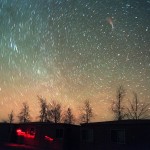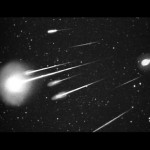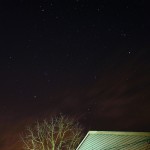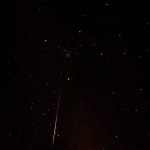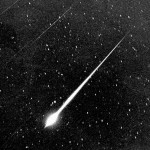How to See the Leonid Meteor Shower This Weekend in Texas
- Leonid Multi-Instrument Aircraft Campaign captured this image during the 1999 Leonid meteor storm
- AZRAK, JORDAN: Photo dated 18 November 1999 shows a Leonid meteor storm over the Azrak desert, 90km east of Amman. The storm packed up to some 1,500 meteros per hour visible with the eye. The Leonids – so called because they appear in the sky in the region of the constellation of Leo – are a stream of minute dust particles trailing behind the Tempel-Tuttle comet, which is visible from earth every 33 years.
- Image was taken during the 1999 Leonid meteor storm as part of NASA’s Leonid Multi-Instrument Aircraft Campaign
- Four Views Of The Leonid Meteor Shower Of 1966, A Peak Year For This Active Yearly Shower. The Next Leonid Peak Is In The Years 1998 To 2000. The Leonids Make Their Appearance, And Take Their Name, From A Point In The Constellation Leo. These Pictures Were Taken On November 18Th, 1966, From The Kitt Peak National Observatory Near Tucson, Arizona.
- SHERBORN, UNITED STATES: The green streak of a meteor seen in the southern sky of New England photographed in Sherborn, Massachusetts early 18 November, 2001 and was one of thousands that entered the earth’s atmosphere during a major meteor shower. The shower, which occurs over several days every mid-November, is called the Leonids because it appears to come from the constellation of Leo.
- This Bright Leonid Fireball Is Shown During The Storm Of 1966 In The Sky Above Wrightwood, Calif. The Leonids Occur Every Year On Or About Nov. 18Th And Stargazers Are Tempted With A Drizzle Of 10 Or 20 Meteors Fizzing Across The Horizon Every Hour. But Every 33 Years A Rare And Dazzling Leonids Storm Can Occur But, Astronomers Believe The 1999 Edition Of The Leonids Probably Won’T Equal 1966, Which Peaked At 144,000 Meteors Per Hour.
Stars of the racetrack won’t be the only lights in the firmament this weekend. It’s also peak time for viewing the Leonid meteor shower. “The shower should produce perhaps a dozen or so “shooting stars” per hour,” UT’s StarDate at McDonald Observatory writes. “The best view comes in the wee hours of the morning, as your part of Earth turns most directly into the meteor stream.”
Peak viewing times should be between midnight and dawn Saturday night.
“Just remember, a meteor shower peak prediction is not an ironclad guarantee,” EarthSky writes. “If it’s clear, you might see nearly as many meteors in the predawn darkness on Friday, November 16 or Sunday, November 18. The days before and after that might feature meteors as well, as we pass through the Leonid meteor stream in space.”

